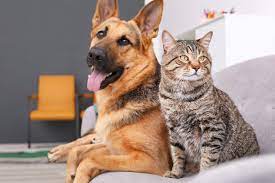In the intricate tapestry of the animal kingdom, there exist peculiar tales of survival and adaptation that defy our preconceived notions of nature’s order. Among these remarkable stories is the phenomenon of animals that drink other animals milk – an intriguing example of resourcefulness that challenges our understanding of the boundaries of life’s sustenance. Beyond the familiar imagery of nurturing mothers and their offspring, there lies a captivating and unexpected world where lactose larceny takes center stage.
In this exploration of nature’s unconventional milk drinkers, we embark on a journey that spans continents and species, revealing the secrets of some of the animal kingdom’s most unexpected lactose consumers. From crafty thieves in the African savannah to the enigmatic strategies of ocean-dwelling pirates, these creatures offer a fascinating glimpse into the diverse ways life adapts and thrives. Join us as we unveil the intriguing world of animals that drink other animals milk, showcasing the astonishing adaptations that blur the lines between predator and provider in the grand theater of the wild.
Mammalian Milk: A Nutrient-Rich Resource
Mammalian milk, the cornerstone of early life nourishment, is a testament to nature’s precision in catering to the nutritional needs of different species. Comprising fats, proteins, carbohydrates, vitamins, and minerals, it serves as a vital source of sustenance during the critical stages of infancy. This section delves into the composition of mammalian milk, its adaptability, and the remarkable role it plays in the growth and development of young animals.
The composition of milk varies significantly among mammals, tailored to meet the unique requirements of each species. Whether it’s the high-fat content of seal milk, ideal for insulating pups in icy waters, or the protein-rich milk of big cats, engineered to fuel rapid growth, nature crafts each blend with precision. Moreover, milk is a dynamic fluid that evolves to match the changing needs of offspring as they grow. The ability to fine-tune its composition underscores its significance as a vital nutrient source.
Common Examples of Cross-Species Milk Consumption
A. Cats and Dogs

In the world of domestic pets, cats and dogs provide a prime example of cross-species milk consumption. While kittens and puppies instinctively seek nourishment from their mother’s milk, circumstances sometimes necessitate human intervention. This sub-topic explores the dynamics of milk consumption in domestic settings, examining the nutritional needs of these young animals and the solutions available to ensure their healthy development.
Milk replacers formulated to mimic the nutrient composition of a mother’s milk play a crucial role in bridging the nutritional gap for orphaned kittens and puppies. However, it’s essential to recognize that while milk may be suitable for these domesticated species, it’s not universally safe or nutritious for all animals, especially in the wild.
B. Wild Animals

In the untamed wilderness, instances of cross-species milk consumption are relatively rare but not unheard of. Foster parenting, where a female of one species nurses the young of another, has been observed in some cases, often as an act of maternal altruism. This section delves into documented instances of these fascinating occurrences, shedding light on the complex dynamics of the animal kingdom.
From the striking example of lionesses nursing orphaned leopard cubs to the intriguing behaviors of interspecies adoption, the wild provides us with glimpses of the unexpected bonds that can form in nature. While these events are relatively infrequent, they highlight the capacity of some animals to adapt and care for the young of different species.
C. Zoological Settings

Zoological settings present unique challenges and opportunities when it comes to cross-species milk consumption. Caretakers in these environments sometimes employ cross-species milk feeding to ensure the survival of vulnerable or orphaned animals. This sub-topic delves into the strategies employed in zoos and wildlife sanctuaries to provide appropriate nutrition to young animals in their care.
Zoos often use milk from closely related species or specially formulated milk replacers to mimic the mother’s milk’s nutritional content. Careful consideration is given to the nutritional needs of the young animals, with the goal of ensuring their healthy development and eventual reintegration into their natural habitats, when possible.
Unconventional Cases of Cross-Species Milk Consumption
Beyond the domestic and zoological realms, there are unconventional cases of cross-species milk consumption that challenge our understanding of animal behavior. From goats nursing tiger cubs to cheetahs feeding on the milk of dogs, these remarkable instances continue to intrigue scientists and enthusiasts alike, shedding light on the adaptive capabilities of various species.
The Science Behind Cross-Species Milk Acceptance
The acceptance of milk from another species by a recipient animal is not a mere quirk of nature but rather a phenomenon rooted in biological mechanisms. This section peels back the layers of science to uncover the sensory and nutritional factors that contribute to cross-species milk acceptance.
The sensory receptors in a young animal’s mouth, particularly the taste and suckling reflexes, play a pivotal role in determining whether the animal will accept milk from a different species. When these receptors are triggered by the taste and texture of the milk, the animal is more likely to accept it, regardless of the source species. Additionally, the nutritional composition of the milk, including the balance of fats, proteins, and carbohydrates, can significantly influence its acceptability. Careful matching of milk replacers to the recipient’s nutritional requirements is vital for successful cross-species nursing.
Ethical and Conservation Considerations
While cross-species milk feeding can be a lifeline for orphaned or vulnerable animals, it raises ethical questions, especially in the context of wild animal conservation. This section dives into the complex ethical considerations surrounding the practice, including potential impacts on natural behavior patterns, dietary preferences, and social bonds within a species.
Introducing milk from another species can potentially disrupt natural behavior patterns and dietary preferences. It is crucial to consider the long-term implications of such interventions and strive for solutions that minimize human interference while respecting the intrinsic dynamics of ecosystems.
Challenges and Risks
Cross-species milk feeding is not without its challenges and risks. Inappropriate milk composition or feeding practices can lead to nutritional imbalances, digestive issues, and even health problems in the recipient animal. Moreover, fostering can disrupt social bonds within a species, potentially affecting the animal’s ability to reintegrate into its natural habitat. This section explores the potential pitfalls and challenges associated with cross-species milk consumption and offers insights into how these risks can be mitigated.
Ensuring the health and well-being of young animals receiving cross-species milk requires a deep understanding of the nutritional needs of both the donor and recipient species, as well as close monitoring to detect and address any issues that may arise.
Final Words
Cross-species milk consumption offers a captivating glimpse into the adaptability and complexity of the animal kingdom. While it showcases the extraordinary ways in which animals can survive and thrive, it also underscores the need for responsible stewardship when intervening in natural processes.
As we continue to uncover the science behind these intriguing behaviors and confront the ethical considerations they raise, our understanding of the intricate web of life on Earth deepens, reinforcing the importance of protecting and preserving the diversity of species that share our planet.
Ultimately, the stories of animals that drink other animals’ milk serve as a reminder of the boundless wonders of the natural world and the ongoing quest to understand and coexist with it.
Reference:
- https://www.newfoodmagazine.com/news/166768/why-do-humans-drink-animal-milk/
- https://www.scienceabc.com/humans/species-drink-milk-another-species.html
- https://www.nidirect.gov.uk/articles/welfare-primates-need-suitable-diet
A motivated philosophy graduate and student of wildlife conservation with a deep interest in human-wildlife relationships, including wildlife communication, environmental education, and conservation anthropology. Offers strong interpersonal, research, writing, and creativity skills.










